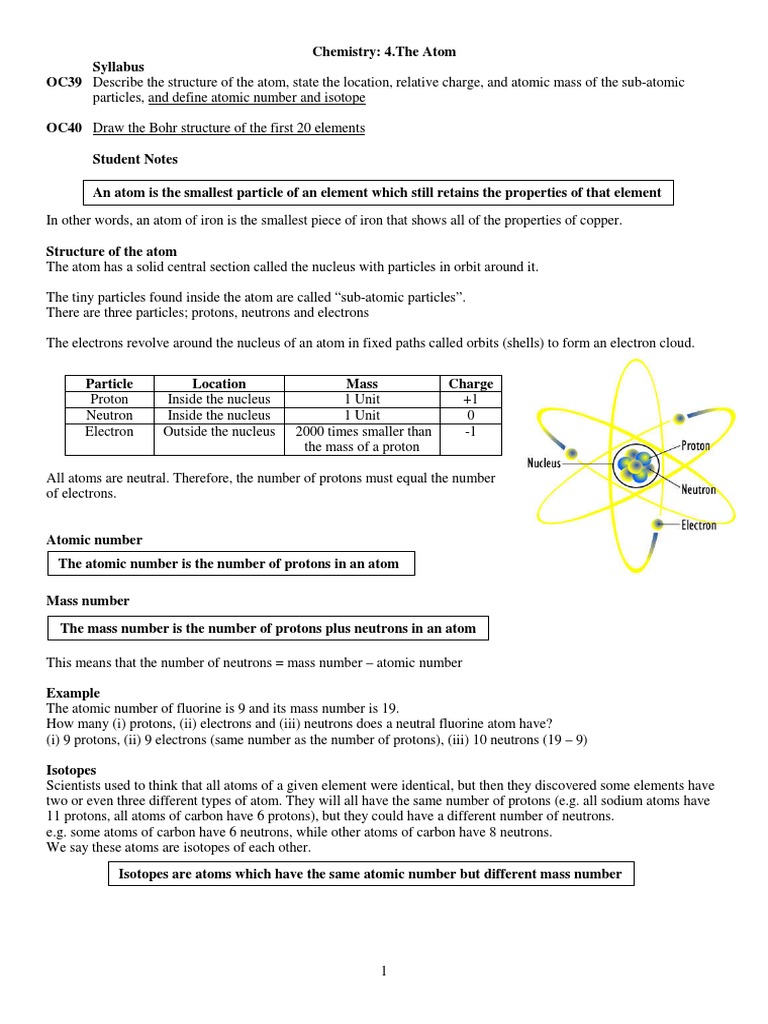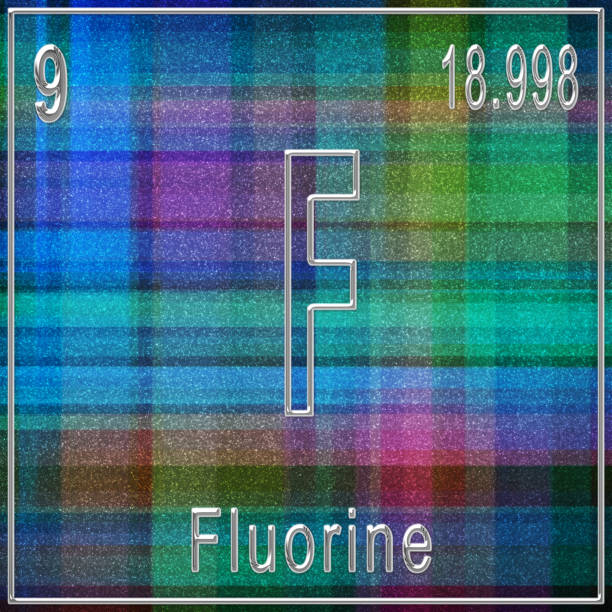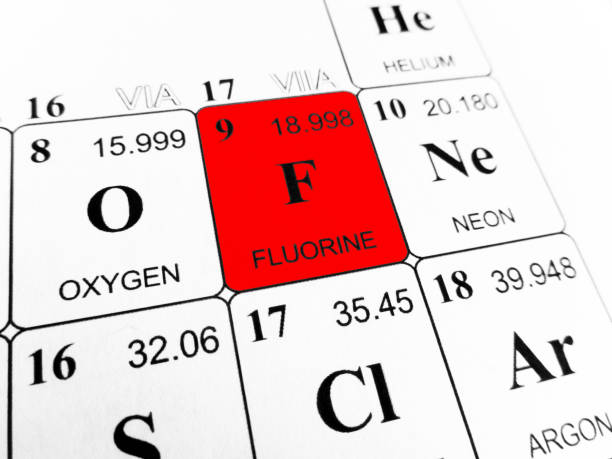Fluorine (9 F) has 17 known isotopes ranging from 14 F to 31 F (with the exception of 30 F) and two isomers (18m F and 26m F). Only fluorine-19 is stable and naturally occurring; therefore, fluorine is a monoisotopic and mononuclidic element, and only artificially produced fluorine isotopes have mass numbers other than 19. List of isotopes; Fluorine-18. In this video we’ll use the Periodic table and a few simple rules to find the protons, electrons, and neutrons for the element Fluorine (F). From the Periodi.

Our editors will review what you’ve submitted and determine whether to revise the article.
Join Britannica's Publishing Partner Program and our community of experts to gain a global audience for your work!Fluorine (F), most reactive chemical element and the lightest member of the halogen elements, or Group 17 (Group VIIa) of the periodic table. Its chemical activity can be attributed to its extreme ability to attract electrons (it is the most electronegative element) and to the small size of its atoms.

| atomic number | 9 |
|---|---|
| atomic weight | 18.998403163 |
| melting point | −219.62 °C (−363.32 °F) |
| boiling point | −188 °C (−306 °F) |
| density (1 atm, 0 °C or 32 °F) | 1.696 g/litre (0.226 ounce/gallon) |
| oxidation states | −1 |
| electron config. | 1s22s22p5 |
History
The fluorine-containing mineral fluorspar (or fluorite) was described in 1529 by the German physician and mineralogist Georgius Agricola. It appears likely that crude hydrofluoric acid was first prepared by an unknown English glassworker in 1720. In 1771 the Swedish chemist Carl Wilhelm Scheele obtained hydrofluoric acid in an impure state by heating fluorspar with concentrated sulfuric acid in a glass retort, which was greatly corroded by the product; as a result, vessels made of metal were used in subsequent experiments with the substance. The nearly anhydrous acid was prepared in 1809, and two years later the French physicist André-Marie Ampère suggested that it was a compound of hydrogen with an unknown element, analogous to chlorine, for which he suggested the name fluorine. Fluorspar was then recognized to be calcium fluoride.
The isolation of fluorine was for a long time one of the chief unsolved problems in inorganic chemistry, and it was not until 1886 that the French chemist Henri Moissan prepared the element by electrolyzing a solution of potassium hydrogen fluoride in hydrogen fluoride. He received the 1906 Nobel Prize for Chemistry for isolating fluorine. The difficulty in handling the element and its toxic properties contributed to the slow progress in fluorine chemistry. Indeed, up to the time of World War II the element appeared to be a laboratory curiosity. Then, however, the use of uranium hexafluoride in the separation of uranium isotopes, along with the development of organic fluorine compounds of industrial importance, made fluorine an industrial chemical of considerable use.
Occurrence and distribution
The fluorine-containing mineral fluorspar (fluorite, CaF2) has been used for centuries as a flux (cleansing agent) in various metallurgical processes. The name fluorspar is derived from the Latin fluere, “to flow.” The mineral subsequently proved to be a source of the element, which was accordingly named fluorine. The colourless, transparent crystals of fluorspar exhibit a bluish tinge when illuminated, and this property is accordingly known as fluorescence.
Fluorine is found in nature only in the form of its chemical compounds, except for trace amounts of the free element in fluorspar that has been subjected to radiation from radium. Not a rare element, it makes up about 0.065 percent of Earth’s crust. The principal fluorine-containing minerals are (1) fluorspar, deposits of which occur in Illinois, Kentucky, Derbyshire, southern Germany, the south of France, and Russia and the chief source of fluorine, (2) cryolite (Na3AlF6), chiefly from Greenland, (3) fluoroapatite (Ca5[PO4]3[F,Cl]), widely distributed and containing variable amounts of fluorine and chlorine, (4) topaz (Al2SiO4[F,OH]2), the gemstone, and (5) lepidolite, a mica as well as a component of animal bones and teeth.

Physical and chemical properties
At room temperature fluorine is a faintly yellow gas with an irritating odour. Inhalation of the gas is dangerous. Upon cooling fluorine becomes a yellow liquid. There is only one stable isotope of the element, fluorine-19.
Because fluorine is the most electronegative of the elements, atomic groupings rich in fluorine are often negatively charged. Methyl iodide (CH3I) and trifluoroiodomethane (CF3I) have different charge distributions as shown in the following formulas, in which the Greek symbol δ indicates a partial charge:
The first ionization energy of fluorine is very high (402 kilocalories per mole), giving a standard heat formation for the F+ cation of 420 kilocalories per mole. Finale for mac.
The small size of the fluorine atom makes it possible to pack a relatively large number of fluorine atoms or ions around a given coordination centre (central atom) where it forms many stable complexes—for example, hexafluorosilicate (SiF6)2− and hexafluoroaluminate (AlF6)3−. Fluorine is the most powerfully oxidizing element. No other substance, therefore, is able to oxidize the fluoride anion to the free element, and for this reason the element is not found in the free state in nature. For more than 150 years, all chemical methods had failed to produce the element, success having been achieved only by the use of electrolytic methods. However, in 1986 American chemist Karl O. Christe reported the first chemical preparation of fluorine, where “chemical preparation” means a method that does not use techniques such as electrolysis, photolysis, and discharge or use fluorine itself in the synthesis of any of the starting materials. He used K2MnF6 and antimony pentafluoride (SbF5), both of which can be easily prepared from HF solutions.
The high oxidizing power of fluorine allows the element to produce the highest oxidation numbers possible in other elements, and many high oxidation state fluorides of elements are known for which there are no other corresponding halides—e.g., silver difluoride (AgF2), cobalt trifluoride (CoF3), rhenium heptafluoride (ReF7), bromine pentafluoride (BrF5), and iodine heptafluoride (IF7).
Fluorine (F2), composed of two fluorine atoms, combines with all other elements except helium and neon to form ionic or covalent fluorides. Some metals, such as nickel, are quickly covered by a fluoride layer, which prevents further attack of the metal by the element. Certain dry metals, such as mild steel, copper, aluminum, or Monel (a 66 percent nickel, 31.5 percent copper alloy), are not attacked by fluorine at ordinary temperatures. For work with fluorine at temperatures up to 600 °C (1,100 °F), Monel is suitable; sintered alumina is resistant up to 700 °C (1,300 °F). When lubricants are required, fluorocarbon oils are most suitable. Fluorine reacts violently with organic matter (such as rubber, wood, and cloth), and controlled fluorination of organic compounds by the action of elemental fluorine is only possible if special precautions are taken.
- key people
- related topics

To calculate oxidation numbers of elements in the chemical compound, enter it's formula and click 'Calculate' (for example: Ca2+, HF2^-, Fe4[Fe(CN)6]3, NH4NO3, so42-, ch3cooh, cuso4*5h2o).
Fluorine Mass Number
Formula in Hill notation
The oxidation state of an atom is the charge of this atom after ionic approximation of its heteronuclear bonds. The oxidation number is synonymous with the oxidation state. Determining oxidation numbers from the Lewis structure (Figure 1a) is even easier than deducing it from the molecular formula (Figure 1b). The oxidation number of each atom can be calculated by subtracting the sum of lone pairs and electrons it gains from bonds from the number of valence electrons. Bonds between atoms of the same element (homonuclear bonds) are always divided equally.

Intercepter ng for mac. When dealing with organic compounds and formulas with multiple atoms of the same element, it's easier to work with molecular formulas and average oxidation numbers (Figure 1d). Organic compounds can be written in such a way that anything that doesn't change before the first C-C bond is replaced with the abbreviation R (Figure 1c). Unlike radicals in organic molecules, R cannot be hydrogen. Since the electrons between two carbon atoms are evenly spread, the R group does not change the oxidation number of the carbon atom it's attached to. You can find examples of usage on the Divide the redox reaction into two half-reactions page.
Rules for assigning oxidation numbers
- The oxidation number of a free element is always 0.
- The oxidation number of a monatomic ion equals the charge of the ion.
- Fluorine in compounds is always assigned an oxidation number of -1.
- The alkali metals (group I) always have an oxidation number of +1.
- The alkaline earth metals (group II) are always assigned an oxidation number of +2.
- Oxygen almost always has an oxidation number of -2, except in peroxides (H2O2) where it is -1 and in compounds with fluorine (OF2) where it is +2.
- Hydrogen has an oxidation number of +1 when combined with non-metals, but it has an oxidation number of -1 when combined with metals.
- The algebraic sum of the oxidation numbers of elements in a compound is zero.
- The algebraic sum of the oxidation states in an ion is equal to the charge on the ion.
Assigning oxidation numbers to organic compounds
Periodic Table Fluorine Mass Number
- The oxidation state of any chemically bonded carbon may be assigned by adding -1 for each bond to more electropositive atom (H, Na, Ca, B) and +1 for each bond to more electronegative atom (O, Cl, N, P), and 0 for each carbon atom bonded directly to the carbon of interest. For example:
- propene: CH3-CH=CH2
- lauric acid: CH3(CH2)10COOH
- di-tert-butyl peroxide: (CH3)3COOC(CH3)3
- diisopropyl ether: (CH3)2CH-O-CH(CH3)2
- dibenzyl sulfide: (C6H5CH2)2S
- cysteine: HO2CCH(NH2)CH2SH
